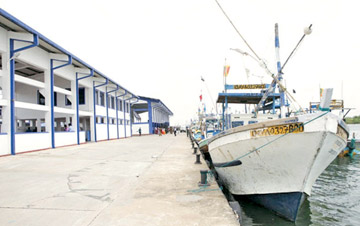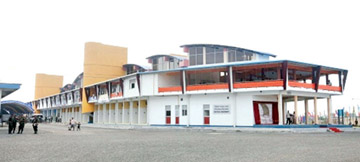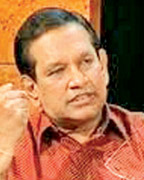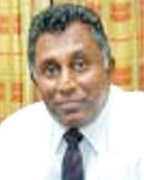|
Many fishery harbours under construction:
Self-sufficiency in fish, Sri Lanka's goal
By Shirajiv SIRIMANE


New Peliyagoda fish market |
Sri Lanka has more sea area than land but it's ironic to note that
while the country exports rice, it imports fish.
One of the main reasons for Sri Lanka to lag behind in the fisheries
sector was the 30-year terrorism which curtailed deep sea fishing.
Today, with fishing restrictions completely lifted, Sri Lanka has a vast
sea area for fishing, including some areas where there are large
catchments which had remained untapped for almost 25 years.Former
Chairman Cey-Nor Rohan Jayasinghe said one of the other gray areas in
the fisheries industry was the lack of technology.
"Due to traditional and outdated techniques that are being used in
the local fisheries sector, over 15 percent of the catch is wasted. In a
bid to find a solution for this problem, a dual-power sashimi boat was
manufactured while 'long liner' techniques too were introduced."
The multi-day fishing vessel usually stays for over 30 days at sea
and fish is stocked one layer on top of the other. "We introduced a
system to store the fish vertically, thus ensuring the freshness of the
catch.New boats were built while portable cold rooms were introduced to
transport fish. Cey-Nor, operating under the Ministry of Fisheries and
Aquatic Resources Development, also launched a venture in Bangladesh to
manufacture fishing boats.
The total capital investment is $ 80,000. This venture will supply
multi-fishing boats to Bangladesh.
Minister of Fisheries and Aquatic Resources Development Dr. Rajitha
Senaratne has realised the potential of the industry and has taken
several meaningful steps towards making Sri Lanka, a self-sufficient
nation for fish in three years.
The fisheries sector is the third most important contributor to Sri
Lanka's economic growth.
It is second only to agriculture and tourism, Minister Senaratne
said.
 |
 |
| Minister Dr.
Rajitha Senaratne |
Former
Chairman, Cey-Nor,
Rohan Jayasinghe |
"The fisheries industry will become a key contributor to the Sri
Lankan economy within the next two years.
"I hope to provide a 50 percent contribution to Sri Lanka's economy
in 2013. We hope to make a 24 percent contribution by the end of this
year," Senaratne said.
Record earnings of US $ 190 million have been received from the
export of prawns and other seafood.
A special laboratory was established to research on prawn
infections.The Minister said that the Budget has allocated Rs. 300
million for the development of traditional fishery villages and
improvement of fisheries industry-based tourism.
Remarkable increase
He said fish production and consumption have shown a remarkable
increase following inputs from the North and the East and the country's
fisheries sector has witnessed a growth from seven to 17 percent. In the
Northern Province alone, the output has increased fourfold.
The daily per capita fish consumption in Sri Lanka is only 31 grams.
It should increase to 60 grams by 2013.
The government has also embarked on several fisheries infrastructure
development projects to the industry.
As in every industry, the middleman was the winner in the fisheries
sector as well.
In the fishing sector, the middleman had even a bigger advantage
since fish cannot be stored and kept overnight like rice or vegetables.
Therefore, the fisherman had no option other than to sell his catch
to the middleman who, in turn, used his cold rooms and vehicles to store
and sell the fish.
In a bid to provide a solution to this problem, several cold rooms
were built, allowing fishermen to use this facility to store and sell
their fish.
One of the other major development projects undertaken by the
Government was to build harbours.
The Valachchenai harbour was built with modern facilities and was
opened recently, reactivating the fisheries sector in the area.
The Mutwal and Beruwala fishery harbours facilitate the distribution
of fish and make a large contribution to fish production in the country.
The Panadura Fisheries Harbour, destroyed by the tsunami, has been
reconstructed and is fully operational today. The fishery harbours of
Hambantota, Ambalangoda and Chilaw are being renovated with all modern
facilities to be included.
"Plants are also afoot to increase the number of fishery reservoirs
to around 8,000 by 2013.
Over 95 percent of the construction work of Sri Lanka's largest
fishery harbour at Dickowita has been completed and the harbour is
expected to be opened within the next six months.
The harbour is being constructed at a cost of Rs. 8,500 million.
The new harbour will consist fuel stations, ice storage facilities,
refrigerators, deep freezers and anchorage. Since these facilities are
not available in the harbour at the moment, the Minister has instructed
the construction company to meet these requirements within a year.
Oluvil harbour
The Oluvil multi-purpose harbour project too would benefit the
industry and as it is designed as an international harbour,
there is potential for fish imports too.
Meanwhile, the fishery harbour, among other facilities, will have an
ice plant, cold storage facilities, fish auction halls, refrigerated
storage, net mending facilities and administration buildings. The
commercial harbour will be able to accommodate 5,000 ton ships.
The main harbour will have among other facilities, a pilot station,
warehouses and administration building.
One of the other major recent developments in the fisheries sector
was the relocation of the Kotahena fish market to Peliyagoda.
The central market consists of 148 wholesale outlets and 128 retail
outlets and has the capacity to handle 500 metric tonnes of fish per
day.
The two-storeyed complex has been completed at a cost of Rs. 1,700
million, and the Asian Development Bank has financed 50 percent of the
cost. This modern fish market has separate stalls for selling fish on a
wholesale basis and on retail basis.
The ground floor has 128 retail stalls and 148 wholesale outlets. The
upper floor has a restaurant, bank branches, shopping outlets, a post
office, a police post, and a quality control unit.
The complex also has three flake ice production units capable of
producing 25 - 50 tons of flake ice per day. It also has three cold
rooms with variable temperature in each room and a waste purification
unit. The complex has been constructed in a 3.17 hectare land. Fish
production in the country is expected to double within the next few
years with the construction and renovation of all harbours in the
country and this would help make Sri Lanka self- sufficient in fish. |

